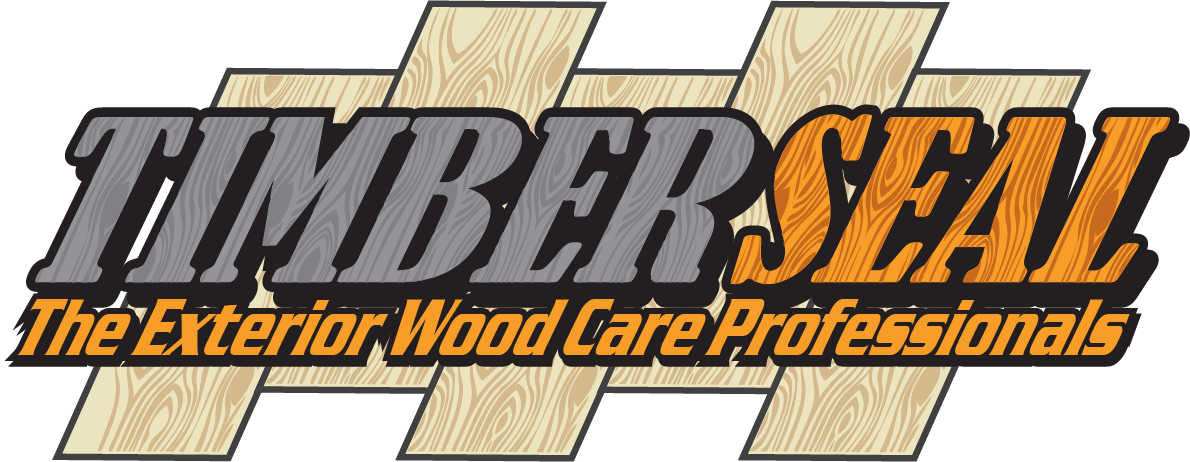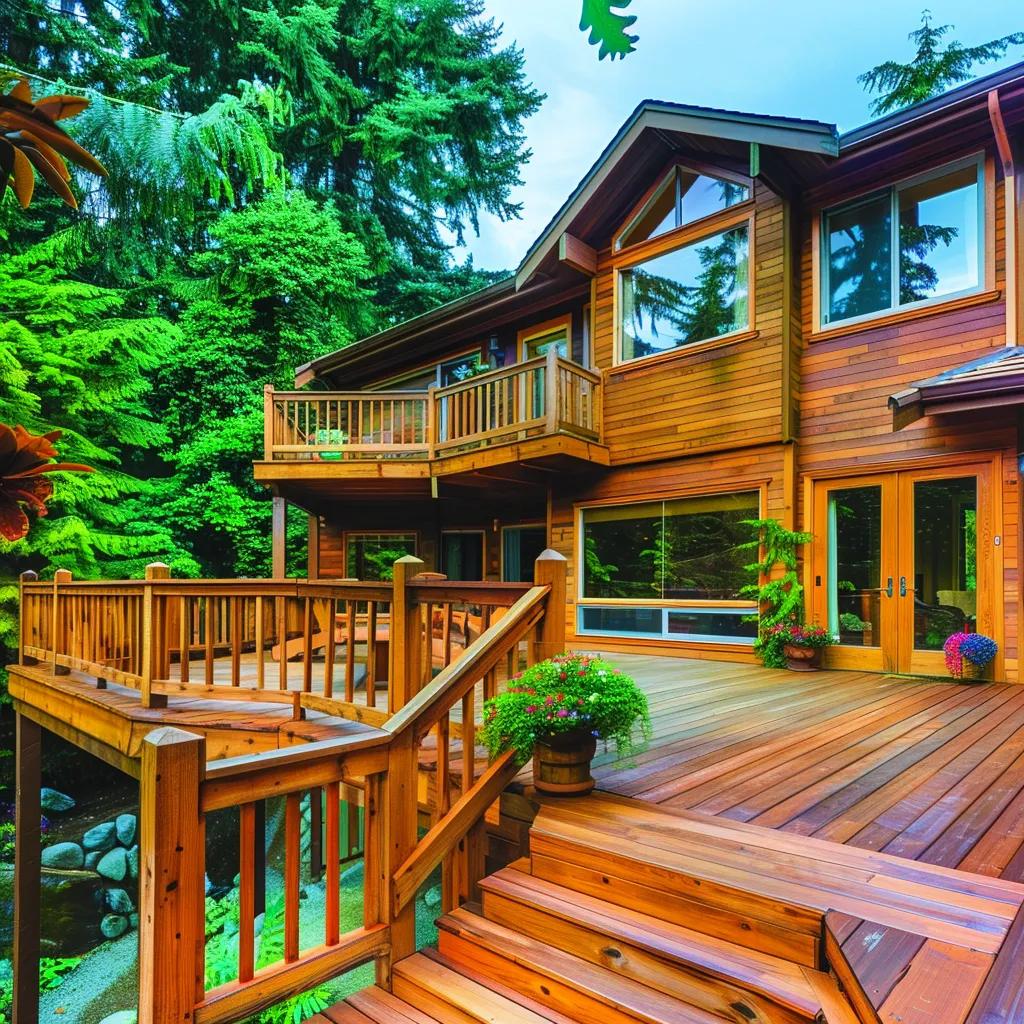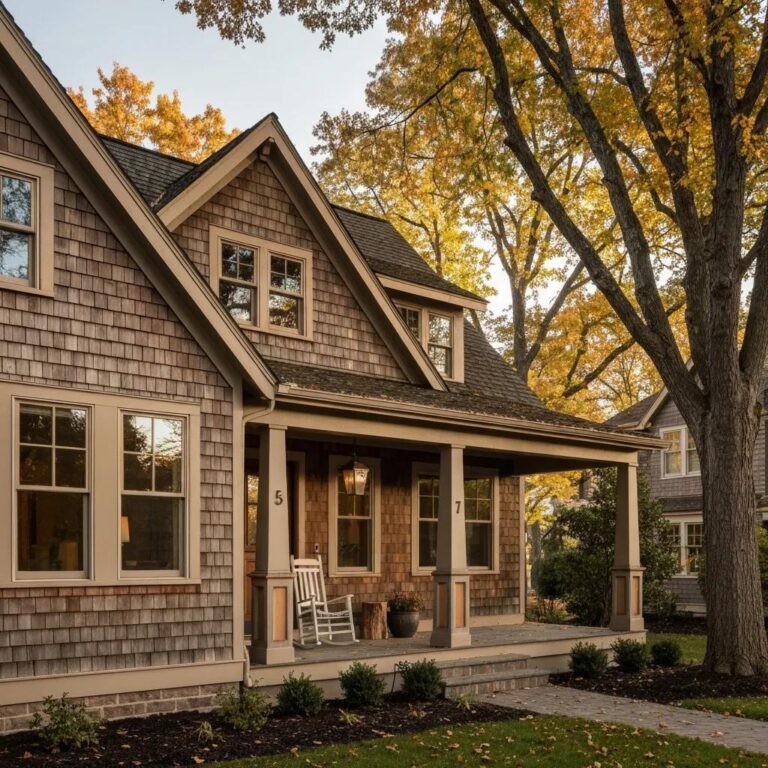Preserve Your Home’s Wood Surfaces with TimberSeal Advice for Lasting Protection and Restoration
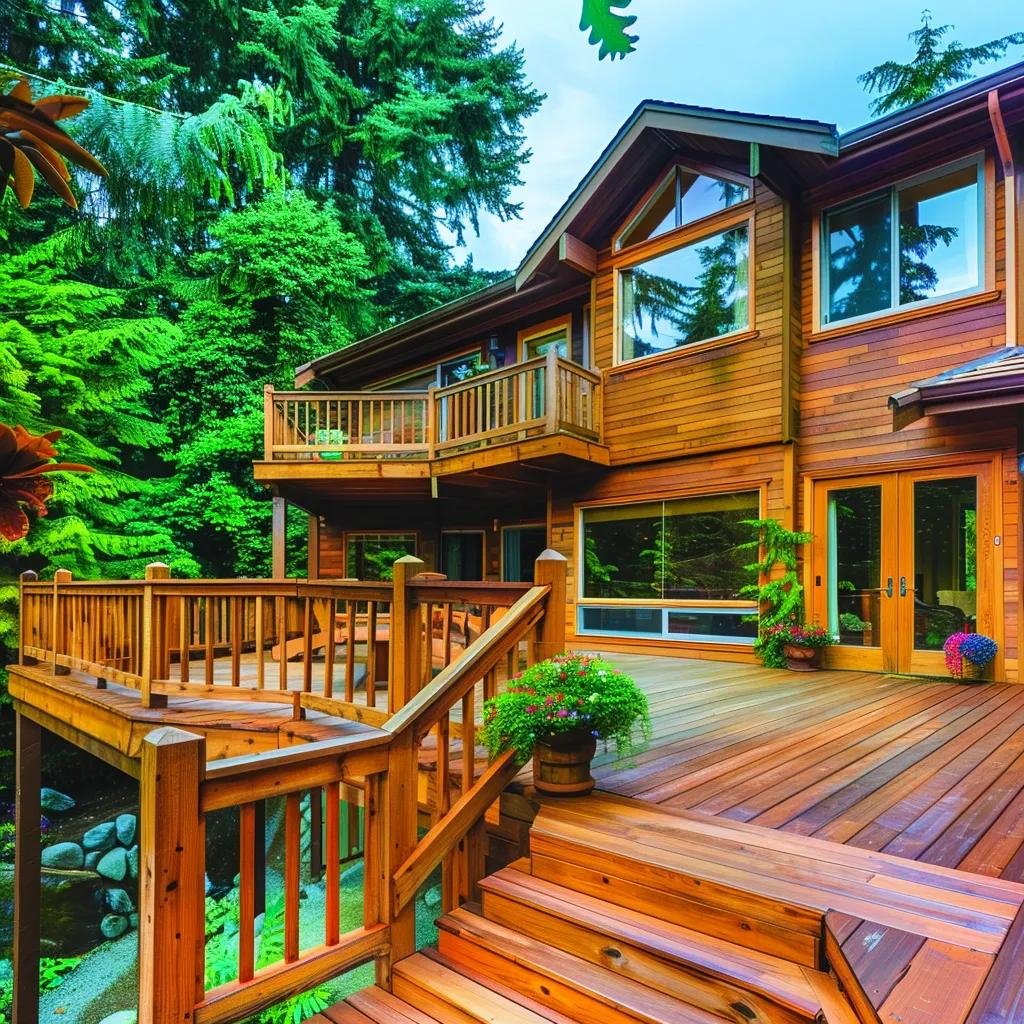
Every year, water intrusion and ultraviolet radiation compromise exterior wood, leading to thousands of dollars in repairs for homeowners. Preserving cedar siding, restoring weathered decks, and treating log homes demand targeted maintenance, protective sealants, and expert repairs. This guide delivers TimberSeal’s step-by-step cedar siding maintenance, deck restoration methods, log home preservation tactics, rot prevention strategies, UV protection techniques, top sealant selections, professional service advantages, mold remediation, and inspection schedules—empowering lasting wood restoration.
How Can You Maintain and Protect Cedar Siding Effectively?
Cedar siding is a natural exterior cladding prized for durability and aesthetic appeal, but seasonal moisture and UV exposure degrade its surface without regular care. Proper maintenance involves cleaning to remove contaminants, repairing cracks to prevent water intrusion, applying high-quality stains or sealants for barrier protection, and scheduling inspections to catch early damage. For comprehensive cedar siding maintenance, follow these best practices to safeguard the wood grain and color integrity.
What Are the Best Practices for Cleaning Cedar Siding?
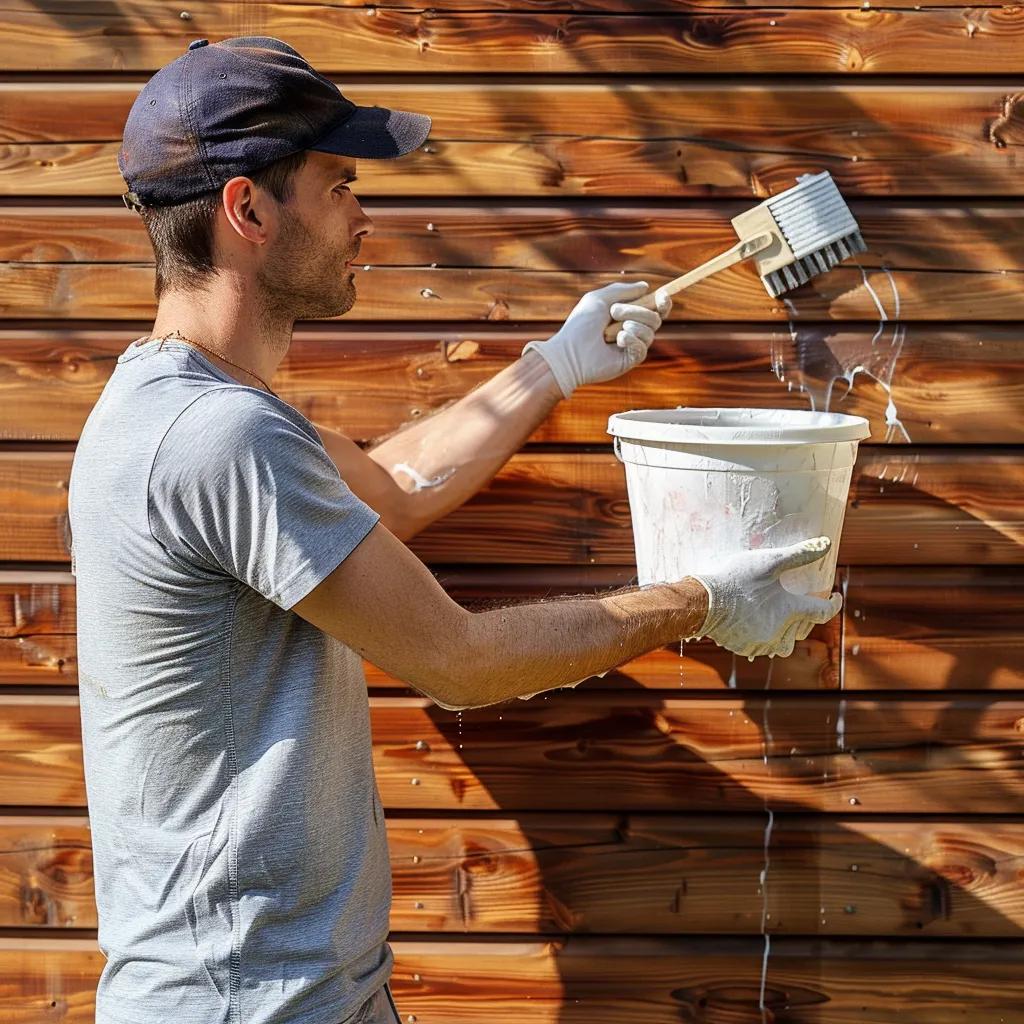
Effective cedar siding cleaning removes dirt, mildew, and pollen without damaging wood fibers.
- Apply a gentle wood-safe detergent mixed with warm water using a soft-bristle brush.
- Rinse siding from top to bottom with a low-pressure garden hose to avoid fiber tearing.
- Use oxygen-based bleach solutions for mild mold or mildew, ensuring rinsing within 5–10 minutes.
- Allow the siding to dry completely (typically 24–48 hours) before any sealing or staining.
Consistent cleaning every 12–18 months prevents surface deterioration and sets the stage for reliable stain adhesion.
Closing with repairs naturally transitions into addressing cedar cracks and damage.
How Do You Repair Cracks and Damage in Cedar Siding?
Repairing cedar cracks halts moisture infiltration and preserves structural integrity. First, remove loose splinters and clean the crack with a brush. Then, apply exterior-grade wood filler or putty, pressing it into the void to seal gaps. Smooth the surface flush with siding and allow 24 hours to cure. Finally, sand lightly and prime before staining to ensure uniform finish and water repellency.
Sealing cracks effectively leads to selecting the ideal stains and sealants for lasting cedar protection.
Which Stains and Sealants Work Best for Cedar Siding Protection?
Selecting a stain or sealant determines cedar’s resilience against moisture, UV rays, and mildew. Below is an EAV comparison of popular cedar siding finishes:
Each finish offers distinct protection qualities—penetrating oils shield from within, while film-forming sealers create an external UV barrier.
Choosing the right cedar finish ensures a durable envelope and leads to planning routine inspections.
How Often Should You Inspect and Maintain Cedar Siding?
Inspect cedar siding semi-annually, ideally each spring and fall, to detect early signs of damage. Look for wood discoloration, raised grain, mildew patches, and loose boards. Address minor concerns immediately to prevent moisture penetration and rot development. Consistent inspections reduce long-term repair costs and keep cedar siding functional, guiding maintenance cycles for all exterior wood surfaces.
Regular cedar inspections lay the groundwork for similar care regimens on decks and other wood structures.
What Are the Essential Steps for Wood Deck Restoration and Care?
Wood deck restoration revitalizes weathered boards, strengthens the structure, and renews aesthetic appeal. Annual cleaning, readiness testing, sealant selection, and targeted repairs form a comprehensive restoration workflow. Following these steps preserves deck integrity, prevents rot, and enhances slip resistance for safe, long-lasting enjoyment.
How Do You Perform Annual Deck Cleaning and Debris Removal?
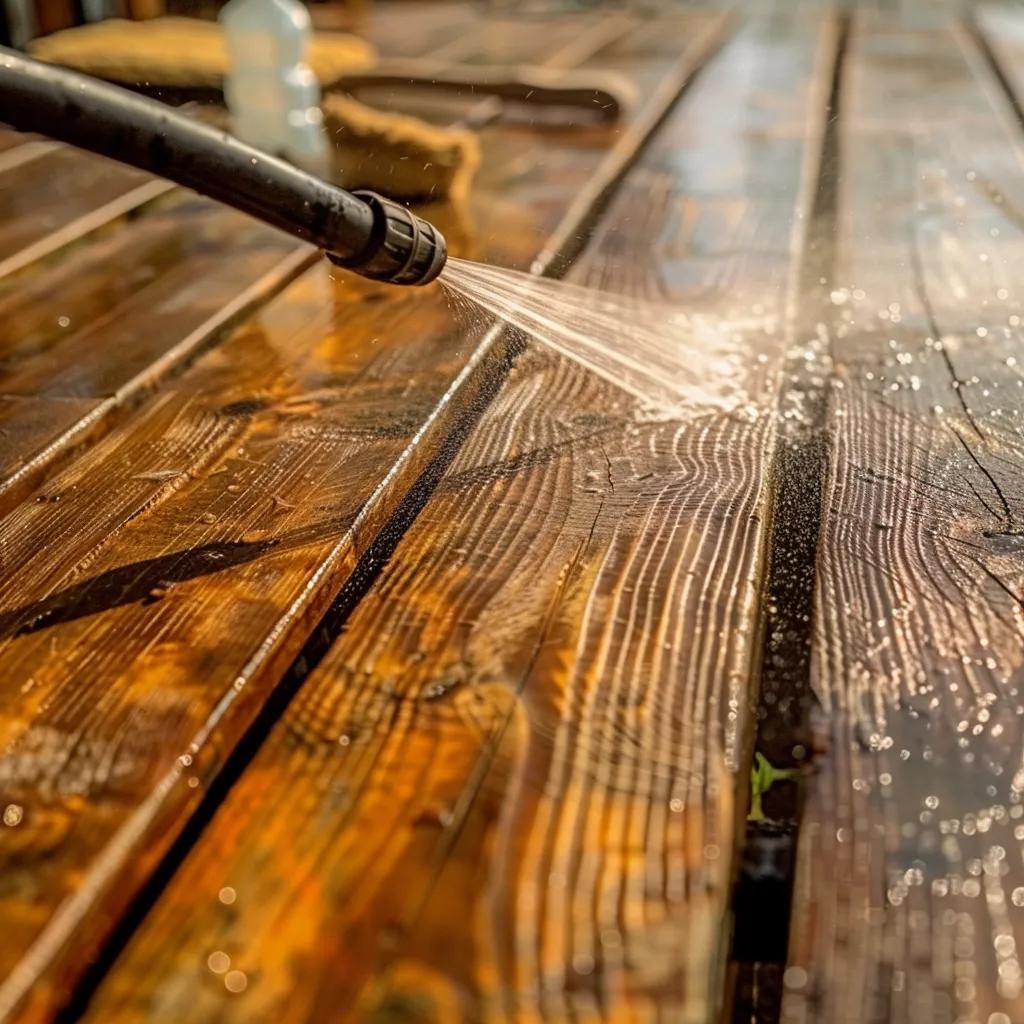
Annual deck cleaning removes organic buildup and surface grime that trap moisture. First, sweep debris and rinse boards with a hose. Next, apply a deck-cleaning solution or oxygen bleach, scrubbing with a nylon brush along the grain. Rinse thoroughly to eliminate residue. Allow the deck to dry fully—approximately 48 hours—before proceeding with inspections or sealant application.
A clean deck surface promotes accurate readiness testing and uniform sealant penetration.
When and How Should You Test Your Deck for Sealing Readiness?
Testing deck readiness ensures optimal sealant absorption. Sprinkle a few drops of water on clean, dry deck boards:
- If droplets bead up, the surface remains sealed and requires light sanding to key the wood.
- If water soaks in within 10–15 seconds, the deck is primed for sealing.
Perform readiness tests in shaded areas and repeat across multiple boards to confirm consistent porosity.
Accurate readiness testing informs the choice between oil-based or water-based sealants for best performance.
What Are the Differences Between Oil-Based and Water-Based Deck Sealants?
Oil-based and water-based sealants each deliver protective layers tailored to deck conditions. The following table outlines their key attributes:
Oil-based sealants → penetrate → wood grain for internal moisture control, while water-based sealants → form → an external UV-resistant film for rapid protection.
Choosing the correct sealant supports effective deck repair strategies.
How Can You Repair Common Deck Damage Like Rot and Cracks?
Deck rot treatment halts decay and restores structural support. Identify rotted boards by softness and dark discoloration. Remove damaged sections and replace with matching, pressure-treated lumber. Secure new boards with stainless steel screws to prevent corrosion. Fill minor cracks with exterior wood filler, sand smooth, then seal to maintain uniform moisture resistance.
Deck damage repairs naturally lead into specialized log home wood preservation techniques.
How Does TimberSeal Preserve and Restore Log Home Wood Surfaces?
Log home timbers require unique treatments to guard against checks, insect activity, and moisture accumulation. Borate treatments eliminate pests, specialized sealants fill cracks, and mold-resistant coatings restore wood health. TimberSeal’s log home services combine these methods to ensure structural longevity and authentic log appearance.
What Are Borate Treatments and How Do They Protect Log Homes?
Borate treatments provide long-lasting insect and fungal protection by penetrating into the wood cell walls. Applied as a spray or dip, borate solutions eliminate termites, decay fungi, and carpenter ants. The treatment becomes part of the wood structure, creating a toxic environment for pests while remaining non-volatile and safe for occupants.
Effective borate application paves the way for addressing checks and mold on log timbers.
How Do You Address Checks, Cracks, and Mold on Log Home Timbers?
Log checks and cracks develop as moisture content fluctuates. Clean cracks with a stiff brush, then fill with a flexible, UV-stable log chinking compound to seal out water. For mold removal, apply a borate-based cleaner and rinse thoroughly. After drying, coat timbers with a breathable, microporous sealer that allows moisture egress while preventing water ingress.
Sealing checks and mold-treated log ends prepares surfaces for long-term fungal and insect prevention.
What Insect and Fungal Protections Are Recommended for Log Homes?
Effective log home protections combine multiple treatments:
- Borate Preservatives for deep insect resistance
- Copper-based Preservatives to inhibit decay fungi
- Microporous Sealers for water vapor permeability
- UV-blocking Stains to prevent photodegradation
These layers work together to preserve log home integrity, showcasing TimberSeal’s comprehensive approach to timber preservation.
What Are the Most Effective Methods to Prevent Wood Rot and Moisture Damage?
Moisture causes wood rot when fungal spores colonize damp surfaces, leading to structural weakening and costly repairs. Effective rot prevention centers on moisture control, early symptom detection, and professional preservative services. By blocking water infiltration, treating early decay, and maintaining protective coatings, homeowners safeguard wood surfaces and structural elements.
Wood Rot and Moisture Damage
Wood rot is a significant concern for homeowners, as it can lead to structural weakening and costly repairs. Effective prevention strategies focus on controlling moisture, detecting early signs of decay, and utilizing professional preservative services to safeguard wood surfaces and structural elements.
This source provides foundational knowledge on wood properties and the factors contributing to its degradation, which is relevant to understanding and preventing wood rot.
How Does Moisture Cause Wood Rot and How Can It Be Controlled?
Wood rot develops when moisture penetrates lumber, raising internal humidity above 20%, which fosters fungal growth. Installing proper flashing, gutters, and trim prevents water accumulation at wood interfaces. Ensuring adequate ventilation under decks and around log homes lowers humidity. Moisture control restores wood to safe conditions and blocks fungal life cycles.
Moisture management insights reinforce the importance of recognizing wood rot signs promptly.
What Are the Signs and Symptoms of Wood Rot to Watch For?
Key indicators of wood rot include:
- Soft, spongy wood under light pressure
- Dark or discolored patches on surfaces
- Crumbling fibers when scraped with a knife
- Musty odor from fungal activity
Recognizing these symptoms early enables timely treatment. Detecting rot and understanding its progression supports professional intervention before extensive structural damage occurs.
How Can Professional Services Prevent Costly Wood Rot Damage?
TimberSeal’s professional assessment identifies hidden decay and executes targeted treatments, including wood consolidants, borate injections, and moisture-blocking sealants. Trained technicians use specialty tools to inspect behind siding and under decks, ensuring no rot goes unnoticed. Professional intervention restores compromised wood, stabilizes structures, and extends service life up to 30 years, saving homeowners substantial future costs.
Professional rot prevention seamlessly transitions into addressing UV damage on all exterior wood.
How Do UV Rays Affect Exterior Wood and How Can You Protect It?
UV rays degrade lignin, the wood’s natural binder, causing surface bleaching, fiber breakdown, and accelerated cracking. Protecting exterior wood requires UV-resistant finishes that block harmful radiation and preserve color and structural integrity. Understanding UV damage mechanisms guides appropriate sealant selection and reapplication intervals for continuous barrier performance.
UV Damage to Wood Surfaces
Ultraviolet (UV) radiation is a major factor in the degradation of exterior wood, breaking down lignin and leading to surface damage. Protecting wood from UV exposure requires the use of UV-resistant finishes that block harmful radiation, preserving both the color and structural integrity of the wood.
This source offers insights into the standards and practices for wood protection, including the use of UV-resistant finishes, which is directly applicable to the article’s discussion of protecting wood surfaces.
What Damage Does UV Exposure Cause to Wood Surfaces?
Ultraviolet radiation breaks down lignin, leading to:
- Surface graying and chalking
- Micro-splintering as fibers erode
- Accelerated moisture absorption due to roughened grain
- Reduced mechanical strength over time
This surface erosion necessitates protective coatings that absorb or reflect UV energy, blocking direct photodegradation and preserving wood health.
Which Sealants and Stains Offer the Best UV Protection?
Selecting high-grade finishes with UV blockers and pigments provides optimal sun defense. Below is a comparison of finishes based on UV protection:
Effective UV finishes reflect or absorb radiation to minimize lignin breakdown and maintain aesthetic consistency.
How Often Should You Reapply UV Protective Treatments?
For sustained UV defense, reapply semi-transparent and transparent finishes every 12–24 months, depending on climate intensity. Opaque, reflective coatings extend coverage to 4–5 years. Conduct a water-drop readiness test prior to reapplication to confirm proper adhesion. Consistent reapplication restores protective layers and mitigates cumulative UV damage over time.
Regular UV treatment cycles prime homeowners to evaluate top sealant and stain options for all wood surfaces.
What Are the Best Wood Sealants and Stains for Long-Lasting Exterior Protection?
Wood sealants and stains differ in formulation, application methods, and protective features. Optimal choices depend on wood species, climate, and desired appearance. By comparing oil-based, water-based, and hybrid formulas, homeowners can select finishes that deliver water repellency, UV resistance, and mold prevention for extended durability.
What Are the Differences Between Oil-Based and Water-Based Sealants?
Oil-based sealants penetrate deeply into wood fibers, offering internal moisture control and rich, natural hues. Water-based sealants form a protective film on the surface, drying quickly and resisting UV-induced yellowing. Hybrid sealants blend penetrating oils with acrylic polymers to balance depth and surface shielding.
These differences influence application frequency, cleanup, and long-term maintenance plans for varied wood surfaces.
How Do Sealants Provide Water Repellency and Mold Resistance?
Sealant molecules bond within wood capillaries or on the surface to repel water ingress, lowering equilibrium moisture content below rot-initiating thresholds. Many formulations include biocides that inhibit fungal spore germination and mildew colonization. Combined water repellency and mold resistance maintain wood dryness and structural integrity through wet seasons.
Understanding these protective mechanisms informs selection of sealant formulations for specific environmental challenges.
How to Choose the Right Sealant for Different Wood Surfaces?
Select sealants based on wood density, porosity, and exposure:
- Softwoods (pine, cedar): Penetrating oil-based sealants for deep grain saturation
- Hardwoods (ipe, mahogany): Film-forming water-based sealers for surface UV defense
- Log Homes: Microporous finishes that allow vapor release
- Decks: Hybrid sealants for both moisture control and UV protection
Matching sealant attributes to wood characteristics optimizes performance and longevity.
Why Should Homeowners Choose Professional Wood Preservation Services?
Professional wood preservation services deliver precision, specialized equipment, and protective formulations that outpace DIY efforts. Expert technicians assess unique wood conditions, execute thorough cleaning and repairs, and apply industry-grade sealants with uniform coverage. By entrusting preservation to professionals, homeowners achieve longer lifespans, enhanced aesthetics, and minimized long-term costs.
What Are the Benefits of Professional Cleaning, Repair, and Sealing?
Professional services provide:
- Comprehensive Assessment – identifying hidden decay and structural concerns
- Specialized Equipment – low-impact pressure washers, moisture meters, sanding tools
- Advanced Formulations – concentrated sealants with superior adhesion and UV filters
- Precision Application – uniform coverage that prevents leaks and uneven wear
These benefits ensure every wood surface receives tailored care, surpassing standard maintenance efforts.
How Does Professional Service Extend Wood Lifespan and Save Costs?
TimberSeal’s professional restoration can extend cedar siding longevity up to 40 years, decks up to 30 years, and log treatments across multiple decades. Early detection and corrective treatments prevent major structural replacement costs, achieving up to 50% savings over unmanaged deterioration. Investment in expert preservation pays dividends by avoiding frequent surface recoats and expensive repairs.
Cost-saving insights segue into the unique TimberSeal advantage.
What Makes TimberSeal’s Expertise Unique in Wood Surface Preservation?
TimberSeal combines proprietary cleaning formulations, patented sealant blends, and proprietary moisture-monitoring protocols to deliver unmatched results. Years of specialized experience in cedar siding, deck restoration, and log home preservation ensure every project meets stringent performance benchmarks. Local climate expertise and dedicated service teams guarantee timely, reliable wood care for homeowners and businesses alike.
Highlighting TimberSeal’s unique capabilities brings focus to tackling mold and mildew challenges on exterior wood.
How Can You Identify and Treat Mold and Mildew on Exterior Wood Surfaces?
Mold and mildew thrive on damp, shaded wood, consuming surface sugars and discoloring siding and decks. Identification, safe cleaning, and preventive treatments restore wood health and block future fungal growth. Addressing mold and mildew comprehensively preserves structural integrity and aesthetic appeal across all exterior wood applications.
What Causes Mold and Mildew Growth on Cedar Siding and Decks?
Mold spores germinate on wood when moisture remains above 20% and organic debris accumulates. Shaded areas, blocked ventilation, and clogged gutters trap humidity, creating microclimates ideal for fungal proliferation. Understanding these environmental factors enables targeted cleanup and mitigation tactics.
How Do You Safely Clean Mold and Mildew from Wood Surfaces?
Safe mold removal combines eco-friendly cleaners and gentle agitation. Apply a mixture of borate cleaner and water to affected areas, scrub with a soft brush, then rinse thoroughly. Avoid harsh chlorine bleach that can damage fibers. Wear protective gear and ensure proper drain flow to capture runoff for disposal.
Which Treatments Prevent Mold and Mildew Recurrence?
Long-term mold prevention relies on:
- Borate Treatments that inhibit fungal spore germination
- Mildew-resistant Sealants with in-formula biocides
- Improved Ventilation through strategic landscaping and spacing
- Routine Surface Inspections every 6–12 months
These measures maintain dry wood surfaces and block mold life cycles before visible signs emerge.
What Are the Recommended Inspection and Maintenance Schedules for Wood Surfaces?
Regular inspections and maintenance cycles uphold wood performance by detecting issues early and refreshing protective layers. Tailored schedules for cedar siding, decks, and log homes balance preservation effort with long-term durability, ensuring wood retains structural strength and visual appeal.
How Often Should You Inspect Cedar Siding, Decks, and Log Homes?
Inspect each surface type on a consistent timeline:
- Cedar Siding: Twice annually (spring and fall)
- Decks: Annually before and after high-use seasons
- Log Homes: Every three years for full preservative application, with visual checks yearly
These intervals align with moisture cycles and UV intensity, optimizing preventive care.
What Are the Key Signs to Look for During Wood Surface Inspections?
During inspections, watch for:
- Splitting or checking along grain lines
- Surface discoloration or chalking
- Soft or spongy boards under pressure
- Bubbling or peeling finishes
- Evidence of insect activity such as bore holes
Identifying these signs early allows timely corrective actions that preserve wood integrity and appearance.
How Does Regular Maintenance Improve Wood Surface Durability?
Consistent maintenance replenishes protective barriers, controls moisture levels, and prevents fungal and insect colonization. Well-timed cleaning and resealing maintain equilibrium moisture below rot thresholds, while prompt repairs halt damage progression. Regular care extends lifespan by up to 50% compared to unmanaged surfaces and preserves aesthetic value.
Sustained maintenance practices bring this comprehensive guide full circle, empowering homeowners to protect every wood surface effectively.
Every wood surface—from cedar siding to log cabin timbers—demands a tailored blend of cleaning, repair, sealing, and inspection to thrive against weather and wear. TimberSeal’s expertise in cedar siding maintenance, deck restoration, and log home preservation delivers proven methods and professional-grade products that extend lifespan, boost curb appeal, and prevent costly damage. Protect your investment and ensure enduring wood beauty by partnering with TimberSeal’s specialists—request a detailed quote at www.timberseal.net or schedule your consultation today.
Frequently Asked Questions
What are the common causes of wood rot in exterior surfaces?
Wood rot primarily occurs due to prolonged exposure to moisture, which fosters fungal growth. Common causes include inadequate drainage, poor ventilation, and water pooling around wood structures. Additionally, organic debris accumulation, such as leaves and dirt, can trap moisture against the wood, accelerating decay. Regular inspections and maintenance can help identify and mitigate these risks, ensuring the longevity of your wood surfaces.
How can I tell if my wood surfaces need professional treatment?
Signs that your wood surfaces may require professional treatment include visible discoloration, soft or spongy areas when pressed, and the presence of mold or mildew. Additionally, if you notice cracks, checks, or peeling finishes, it may indicate that the protective layers have worn off. If these issues are present, seeking professional help can prevent further damage and extend the life of your wood surfaces.
What is the best way to prevent mold and mildew on wood surfaces?
To prevent mold and mildew on wood surfaces, ensure proper ventilation and sunlight exposure, as these conditions inhibit fungal growth. Regular cleaning to remove organic debris and applying mold-resistant sealants can also help. Additionally, using borate treatments can provide long-lasting protection against mold spores. Maintaining a moisture level below 20% is crucial for preventing mold and mildew from taking hold.
How do environmental factors affect the maintenance of wood surfaces?
Environmental factors such as humidity, temperature, and exposure to sunlight significantly impact wood maintenance. High humidity levels can promote rot and mold growth, while extreme temperatures can cause wood to expand and contract, leading to cracks. Sunlight exposure can degrade finishes and lead to UV damage. Understanding these factors helps homeowners tailor their maintenance schedules and select appropriate protective treatments for their specific climate conditions.
What are the benefits of using hybrid sealants for wood surfaces?
Hybrid sealants combine the benefits of oil-based and water-based formulations, offering deep penetration for moisture control while also forming a protective film on the surface. This dual action provides enhanced UV resistance and durability, making them ideal for various wood types. Hybrid sealants dry quickly, reducing downtime, and are easier to clean up than traditional oil-based products, making them a convenient choice for homeowners.
How can I ensure the longevity of my wood surfaces after treatment?
To ensure the longevity of your wood surfaces after treatment, establish a regular maintenance schedule that includes inspections, cleaning, and reapplication of protective coatings. Monitor for signs of wear, such as discoloration or peeling, and address any issues promptly. Additionally, maintaining proper drainage and ventilation around wood structures will help prevent moisture accumulation, further extending the life of your wood surfaces.
What should I look for when choosing a professional wood preservation service?
When selecting a professional wood preservation service, consider their experience, reputation, and the range of services offered. Look for companies that use high-quality, eco-friendly products and have a proven track record in wood restoration. Additionally, inquire about their inspection processes and whether they provide tailored maintenance plans. Customer reviews and testimonials can also provide insight into the quality of their work and customer service.
Conclusion
Every wood surface—from cedar siding to log cabin timbers—demands a tailored blend of cleaning, repair, sealing, and inspection to thrive against weather and wear. TimberSeal’s expertise in cedar siding maintenance, deck restoration, and log home preservation delivers proven methods and professional-grade products that extend lifespan, boost curb appeal, and prevent costly damage. Protect your investment and ensure enduring wood beauty by partnering with TimberSeal’s specialists—request a detailed quote at www.timberseal.net or schedule your consultation today. Experience the difference that expert care can make for your home’s wood surfaces.
